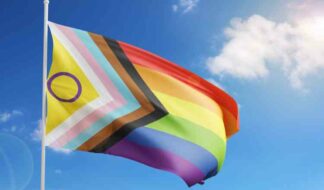According to a Sexuality Poll conducted by Scientific American MIND magazine in its April/May 2006 issue, 50 percent of its readers believe that sexual orientation is innate, genetic or predetermined by other factors such as environment.
Eleven percent believe sexual orientation is a conscious choice.
Comments MIND: "…the idea that sexuality is innate was particularly prevalent among Americans aged 50 to 64 (53 percent) and ages 18 to 29 (51 percent), single people (58.5 percent), Hispanics (57 percent) and Democrats (72 percent).
"People who identified themselves as conservatives were more likely to think that sexual orientation was either fully or partly a choice. This opinion was especially common among those who say they were 'very conservative'; nearly 80 percent held that sexuality is a choice, with only 15 percent believing that it is determined by genetics or other factors."
The poll, conducted by polling specialists Zogby International, and based upon 4,200 responses, was conducted a month after MIND carried an in-depth article by Harvard University psychology Ph.D. Robert Epstein: "Do Gays Have a Choice? Science offers a clear and surprising answer to a controversial question."
According to Epstein, founder of the Cambridge Center for Behavioral Studied in Concord, Mass., his "clear and surprising answer" is that in some cases a change of one's sexual orientation is possible – taking into consideration genetic and environmental factors that contribute to and influence one's sexual predisposition.
All humans, Epstein says, are in theory situated by the subtle combination of nature and nurture – rather than by choice – somewhere on a continuum ranging from completely straight to completely gay. If one is borderline or midpoint between the extremes, change in some rare instances is possible.
(The continuum postulate is not new. Alfred Kinsey suggested in his groundbreaking 1948 study, "Sexuality in the Human Male," the statistical ranking of 0 heterosexuality to 6 homosexuality, with shades of sexuality in between.)
Concludes Epstein, "Because of the enormous pressure pushing all of us toward the straight end of the Sexual Orientation Continuum from the time we are very young, it's reasonable to assume that most of the people who currently live as homosexuals were probably close to the gay end of the continuum to begin with. They probably have strong genetic tendencies toward homosexuality.
"Even though the evidence is clear that some gays can switch their sexual orientation, the vast majority probably cannot – or at least not comfortably."
Accompanying Epstein's MIND article is a nine question check list with assigned numerical points to determine where one falls on the SOC. (BTL readers interested in determining how they rank may click on http://www.MySexualOrientation.com.)
What's becoming increasingly evident to biologists and geneticists alike is that there are genetic "markers" that are present in the DNA strands of gays and lesbians that are not usually found present among exclusive heterosexuals.
Current research indicates the following findings. (For a definitive, non-technical discussion, see pages 274-278, "The Owner's Manual for The Brain"; 3rd Edition, 2006; Pierce J. Howard, Ph.D.)
+ Gays and lesbians have a higher incidence of left-handedness.
+ A significant number of gay men hear equally well in both ears (most males hear better through the right ear, most females equally well in both).
+ Many gay brothers share a DNA strip, called 'linkages,' passed down from their mothers.
+ The anterior commissures (the communication link between two brain hemispheres) of gay men were found to be 34 percent larger than those of straight men, and 8 percent larger than those of women.
+ Many gay men perform like females on spatial tasks; lesbians do not show the same pattern (i.e., perform like straight women).
+ Lesbians tend to show typical male ring finger proportions, with a longer finger. (Among gay men the index finger tends to be shorter.)
+ Among mono-zygotic (identical) twins, if one twin is gay there is a 50 percent probability that the other will be also.
+ For identical twins, 48 percent of those identifying as lesbian or bisexual also were found to have a sister who is a lesbian.
+ The third interstitial nucleus of the anterior hypothalamus is of equal size in women and gay men but is twice as large in straight men. Gay men have fewer neurons in that brain area than straight men, yet more than straight women.
"Homosexuality appears to have a strong genetic component," writes Howard. "To the degree that it is not a choice, it is also not a moral issue. Apparently homosexuality and heterosexuality are as natural as straight or kinky hair; most folks have straight hair, some have kinky hair. Doctors are a minority, but they are not wrong."
Or, are they?
Topics:
News









